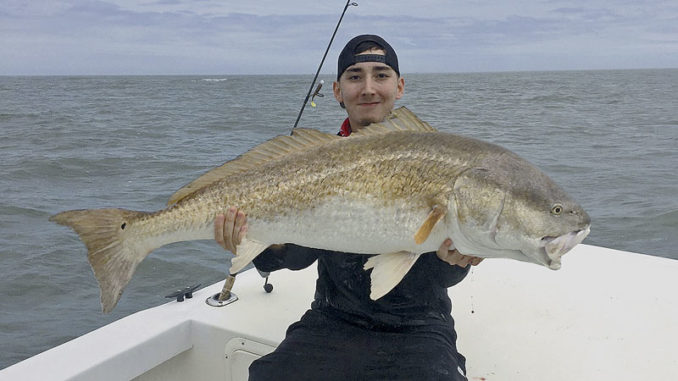
Turns on in shallow Hatteras Inlet waters
July fishing along North Carolina’s Cape Hatteras is subject to be just as hot as the weather. Schools of Hatteras redfish, ranging from pups to bulls, patrol the flats on the sound side of Hatteras Inlet, where anglers can sight-cast to the aggressive bait chasers.
But that’s not all. An unseasonably late arrival of cobia are also available. This makes a July double feature.
“In July, the drum will be a couple of miles inside Hatteras Inlet where they’ve found their home for the summer,” said guide Rom Whitaker IV. “I’m searching in mainly 2 to 6 feet of water because I can’t see them in the deeper water of the sound. They spend a lot of time deeper. But when they want to feed, the whole school will get up on the flat. They usually spend a couple of hours a day there.”
Whitaker, who runs Sound Bound Charters (252-305-5229), does his searching from the tower of his center console. The bronze color of the school is usually a giveaway. But they can also be spotted pushing water in a V-shape or busting mullet. Whitaker will move to intercept the schools of Hatteras redfish, switches off his outboard and drifts into casting range.
“I like to get about 60 yards from them,” Whitaker said. “That puts me in position to at least cast to the middle of the school. If they are really cooperative, I’ll use a popping cork with a gold Johnson Silver Minnow from ¾-ounce to 1 1/8-ounce, depending on the size of the fish. I also like soft plastics like a Z-Man paddletail in chartreuse or electric chicken. Put it on a ¼-to 5/8-ounce jighead or bucktail.”
Reds can certainly be aggressive in adverse conditions. But cloudy, windy days and low-light times like early morning and late evening make sight-fishing difficult. This is when anglers can be happy that lingering cool temperatures have delayed the arrival of cobia.
Whitaker looks for cobia in the deep sloughs inside Hatteras Inlet during tidal exchanges during summer. He anchors up and fan-casts a 4-rod spread of super-fresh menhaden chunks fished on 8/0 circle hooks pinned to the bottom by a 3- to 6-ounce sinker, depending on the current strength. Because of a cobia’s size and power, he spools up with 50- to 80-pound braid and a 40- to 60-pound fluorocarbon leader. Anglers casting to reds will use a similar leader but can downsize to 30-pound line to get more casting distance.




Be the first to comment